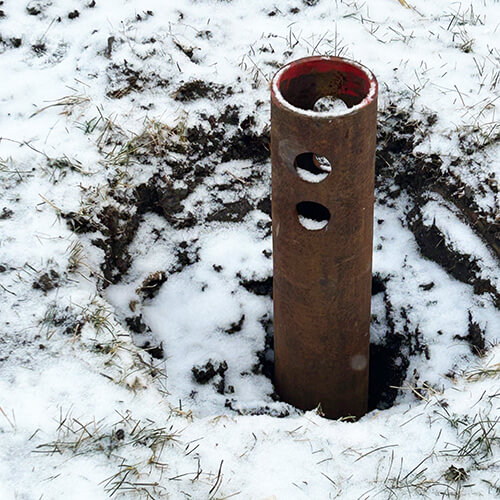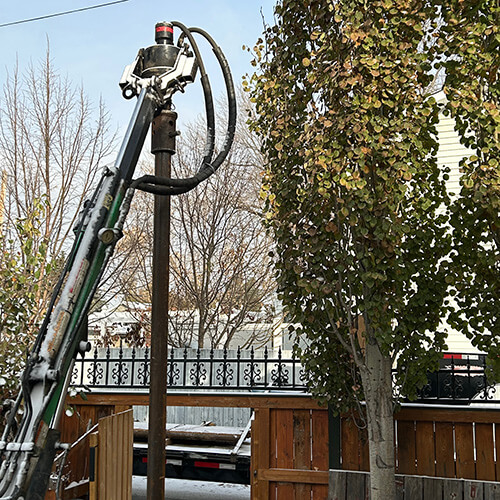Screw Piles and the Frost Line:
Unraveling the Essentials for Structural Stability
Calgary, Alberta, with its cold and frost-prone climate, presents unique challenges for construction projects, especially when it comes to foundational elements. Among the many considerations, one frequently asked question is whether screw piles need to go below the frost line. In this article, we’ll delve into the significance of the frost line in Calgary, the impact of frost heave on structures, and why screw piles extending below the frost line are crucial for stability in this environment.
Understanding Ground Frost
The frost line is the depth below the ground surface at which the soil freezes. In regions like Calgary, where winter temperatures can drop significantly during the winter, the frost line plays a crucial role in construction practices.
Frost Heave in Calgary
Calgary experiences freezing temperatures for a significant portion of the year, leading to frost heave concerns in construction projects. When moisture in the ground freezes, it expands, causing the soil to lift and potentially displacing structures built on or within it. This is known as frost heave and it is a primary consideration when planning foundations in cold climates like in Calgary.


The Role of Screw Piles
Screw piles, also known as helical piles, offer an effective solution to address the challenges posed by frost heave. These steel piles with helical blades are designed to be screwed into the ground, providing a stable and reliable foundation for various structures, including decks, cabins, and residential homes.
Do Screw Piles Need to Go Below the Frost Line?
Yes, screw piles need to extend below the frost line, especially in regions with cold climates like Calgary. The depth to which screw piles should be installed is a critical factor in mitigating the effects of frost heave and ensuring the stability of the structure. It is important to note that the depth at which a screw pile is considered to be installed is the depth at which the helix of the pile resides after installation. The helix of a helical pile is the load-bearing component, which is why it must extend beyond the frost line in order to be stable.
Why Below the Frost Line?
Preventing Frost Heave
The primary reason for installing screw piles below the frost line is to prevent frost heave. By anchoring the piles below the depth at which the ground freezes, the structures supported by these piles are less susceptible to the upward pressure caused by freezing and expanding soil.
Maintaining Stability
Screw piles that extend below the frost line provide a stable foundation that remains unaffected by the seasonal fluctuations in ground temperature. This stability is essential for preventing shifts, tilts, and other structural issues associated with frost heave.
Compliance with Building Codes
Building codes, including the Alberta Building Code, often stipulate the minimum depth requirements for foundations to address frost heave concerns. Adhering to these codes is crucial for ensuring the safety and longevity of structures in cold climates.
Year-Round Stability
Calgary experiences freezing temperatures for a significant part of the year. Screw piles that go below the frost line provide year-round stability, ensuring that the foundation remains secure even during the coldest months.
Contact The Calgary Screw Pile Pros for Help
In Calgary, where the winter freeze is a constant consideration, the depth to which screw piles are installed is a critical factor for the stability and longevity of structures. By going below the frost line, screw piles effectively eliminate the risks associated with frost heave, providing a solid foundation that withstands the challenges of the cold climate. Builders and homeowners alike should prioritize adherence to building codes and consult with professionals like the Calgary Screw Pile Pros to ensure that their construction projects in Calgary are equipped to handle the unique demands of the local environment. Choosing screw piles that go below the frost line is an investment in the durability and resilience of structures in the face of winter’s icy grip.
